Miles 14-15
1 of 17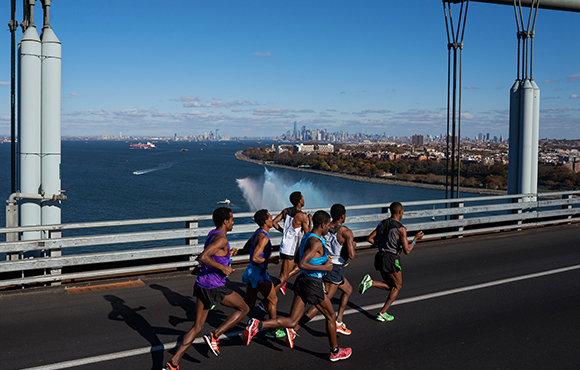
Miles 14 and 15 take runners through Queens and then up and over the Queensboro Bridge. The climb up the bridge might feel tough, so ignore the pace on your watch and just try to maintain a steady effort. As you descend the bridge and near 1st Avenue, the roar of the crowds will be sure to turn your grimace into a smile.
Find:
Your Next RaceMiles 10-13
2 of 17
Near mile 10, runners enter a part of Williamsburg that is home to many Hasidic Jewish residents. There are few spectators in this quiet stretch, so use the time to mentally regroup and focus on hydrating. As the course approaches the Pulaski Bridge, runners will be at the halfway point of the course.
Find:
Your Next RaceMiles 16-19
3 of 17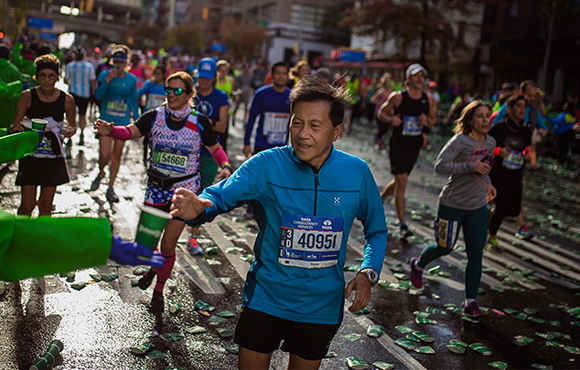
The crowds on 1st Avenue are some of the most energetic of the entire race. But Geisel advises runners to be careful. "Do not get caught up and pick up the pace. You still have 10 miles to go! Stay relaxed, give a couple high-fives and save your energy for Central Park."
Find:
Your Next RaceMiles 20-23
4 of 17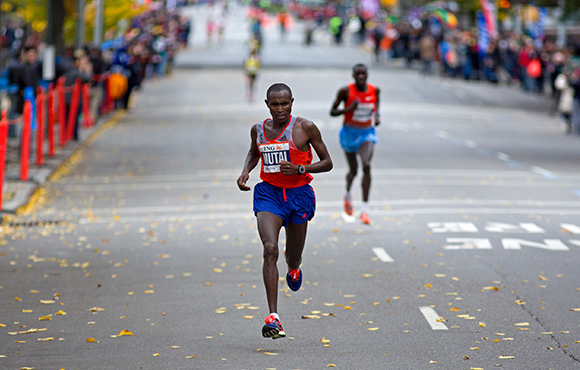
By mile 20, runners enter the Bronx. Many experienced marathoners say that the race can be divided into two "halves," the first 20 miles and the last 10K. The last 10K is the time to really put your head down and focus on maintaining your goal pace. After leaving the Bronx, you'll run through Harlem and finally find your way to 5th Avenue. While it's by no means a mountain, 5th Avenue is slightly uphill. If you conserve energy in the early part of the race, you'll be able to pass some runners here and that can give you a confidence boost.
Find:
Your Next RaceMiles 24-26.2
5 of 17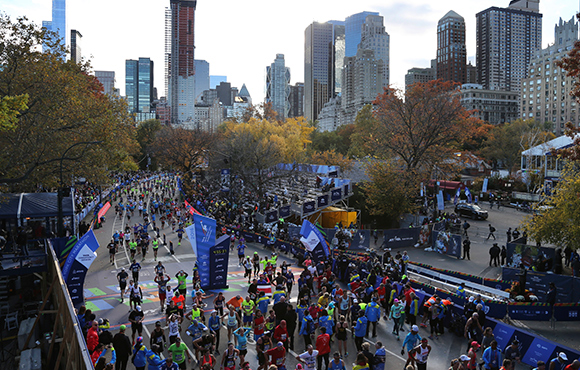
With a little over two miles to go, runners enter iconic Central Park. This part of the course will probably feel tough--the final miles of a marathon almost always feel difficult! Be prepared for sparser crowds and try to take advantage of the small downhill at mile 24. The final mile takes you through the cheering crowds of Central Park South and before you know it you'll be climbing the final small uphill to the finish line. It's time to put it all on the line now!
Find:
Your Next RaceThe Big Finish
6 of 17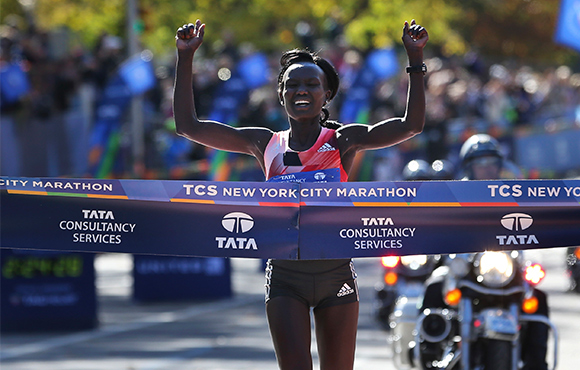
As you bask in the glory of finishing the race, try not to forget about your next steps. Are you meeting friends and family? If so, plan your rendezvous spot well in advance. Runners who check a bag will exit the park between West 81st Street and West 85th Street, while runners who opt not to check bags will be able to exit a little earlier at West 77th Street. Regardless of which option you choose, you'll have to walk a few blocks south in order to meet up with loved ones. There are dedicated family meeting areas based on the first letter of your last name, but if you're familiar with the city, you might want to choose an area that's less crowded.
You might feel a bit lightheaded after the race, so be sure to drink and eat something as soon as possible. The sooner you start refueling, the sooner you'll recover.
"Incorporate carbohydrates to replenish depleted glycogen stores, protein to repair muscle damage and water and electrolytes to rehydrate and restore electrolyte levels," Geisel says.
After you finish, try to have some warm and dry clothes readily available; with large crowds and blocked streets, it can take awhile to get back to your hotel or apartment.
Find:
Your Next RaceBefore the Race
8 of 17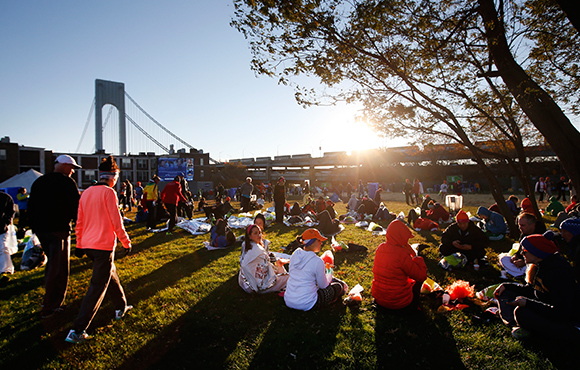
Unlike many marathons, this race starts on the later side (anywhere from 8:30 a.m. to 10:55 a.m., depending on your wave). That means you'll have to eat an extra hearty breakfast, and maybe even a snack, before you cross the starting line. In the weeks leading up to the marathon, practice running a few of your long runs mid-morning so you can nail the appropriate amount of nutrition. Runners will also spend a few hours waiting in the start village on Staten Island. It's near the water, so it can be windy and damp. Bring plenty of clothes that you can either check in a bag or toss at the start. If you have a foil blanket from a previous race, this is a great opportunity to re-use it. Do your best to stay warm and relaxed--any energy you expend shivering or walking around is energy you won't have at mile 22!
Pam Geisel, multi-NYC marathon finisher and a Performance Specialist and Exercise Physiologist at the Hospital for Special Surgery Sports in Manhattan, advises runners to focus on loosening up the body on the walk to the start.
"As you make the stroll towards the start line, add in some more dynamic movements like high knees and butt kicks," Geisel says
Find:
Your Next RaceMiles 1-2
9 of 17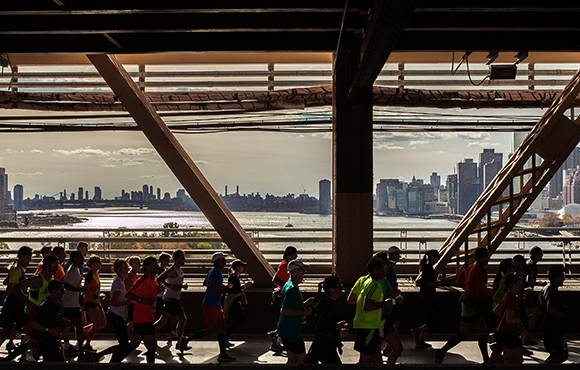
The race begins at the base of Verrazano Bridge, so nearly the whole first mile is uphill while the second mile is downhill. You'll be amped up, you'll be surrounded by excited crowds and the temptation to start off fast will be high--but stick to your pace plan. A good strategy is to run your first few miles 10 to 20 seconds slower than your goal. Avoid bobbing and weaving around fellow runners.
"The crowds will eventually lighten--but in the meantime, fall behind someone that is clearing the way and relax," Geisel says. "You do not want to cover extra distance trying to run around people."
Find:
Your Next RaceMiles 3-9
10 of 17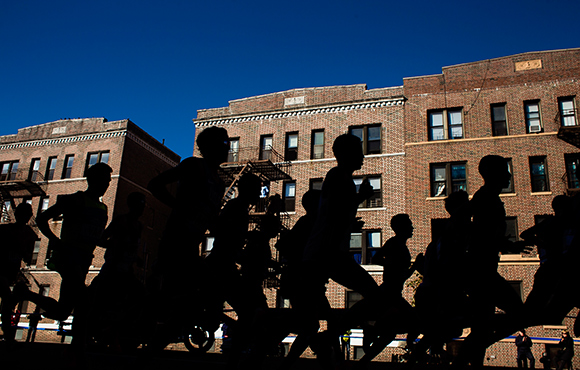
As runners enter Brooklyn, it's time to stay patient and conserve energy. The course is mostly flat at this point and the crowds are plentiful, so be careful not to run too fast. Stick to your fueling plan and eat and drink before you start feeling woozy or tired.
Find:
Your Next RaceMiles 10-13
11 of 17
Near mile 10, runners enter a part of Williamsburg that is home to many Hasidic Jewish residents. There are few spectators in this quiet stretch, so use the time to mentally regroup and focus on hydrating. As the course approaches the Pulaski Bridge, runners will be at the halfway point of the course.
Find:
Your Next RaceMiles 14-15
12 of 17
Miles 14 and 15 take runners through Queens and then up and over the Queensboro Bridge. The climb up the bridge might feel tough, so ignore the pace on your watch and just try to maintain a steady effort. As you descend the bridge and near 1st Avenue, the roar of the crowds will be sure to turn your grimace into a smile.
Find:
Your Next RaceMiles 16-19
13 of 17
The crowds on 1st Avenue are some of the most energetic of the entire race. But Geisel advises runners to be careful. "Do not get caught up and pick up the pace. You still have 10 miles to go! Stay relaxed, give a couple high-fives and save your energy for Central Park."
Find:
Your Next RaceMiles 20-23
14 of 17
By mile 20, runners enter the Bronx. Many experienced marathoners say that the race can be divided into two "halves," the first 20 miles and the last 10K. The last 10K is the time to really put your head down and focus on maintaining your goal pace. After leaving the Bronx, you'll run through Harlem and finally find your way to 5th Avenue. While it's by no means a mountain, 5th Avenue is slightly uphill. If you conserve energy in the early part of the race, you'll be able to pass some runners here and that can give you a confidence boost.
Find:
Your Next RaceMiles 24-26.2
15 of 17
With a little over two miles to go, runners enter iconic Central Park. This part of the course will probably feel tough--the final miles of a marathon almost always feel difficult! Be prepared for sparser crowds and try to take advantage of the small downhill at mile 24. The final mile takes you through the cheering crowds of Central Park South and before you know it you'll be climbing the final small uphill to the finish line. It's time to put it all on the line now!
Find:
Your Next RaceThe Big Finish
16 of 17
As you bask in the glory of finishing the race, try not to forget about your next steps. Are you meeting friends and family? If so, plan your rendezvous spot well in advance. Runners who check a bag will exit the park between West 81st Street and West 85th Street, while runners who opt not to check bags will be able to exit a little earlier at West 77th Street. Regardless of which option you choose, you'll have to walk a few blocks south in order to meet up with loved ones. There are dedicated family meeting areas based on the first letter of your last name, but if you're familiar with the city, you might want to choose an area that's less crowded.
You might feel a bit lightheaded after the race, so be sure to drink and eat something as soon as possible. The sooner you start refueling, the sooner you'll recover.
"Incorporate carbohydrates to replenish depleted glycogen stores, protein to repair muscle damage and water and electrolytes to rehydrate and restore electrolyte levels," Geisel says.
After you finish, try to have some warm and dry clothes readily available; with large crowds and blocked streets, it can take awhile to get back to your hotel or apartment.
Find:
Your Next RaceGet ACTIVE on the Go


Couch to 5K®
The best way to get new runners off the couch and across the finish line of their first 5K.
Available for iOS | Android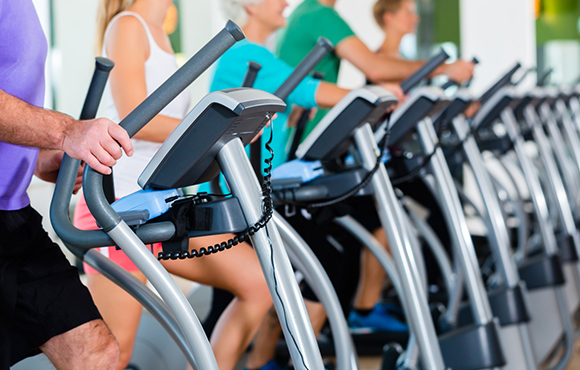
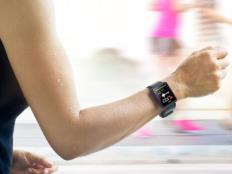
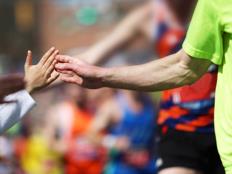
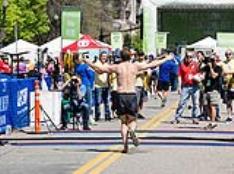


Discuss This Article